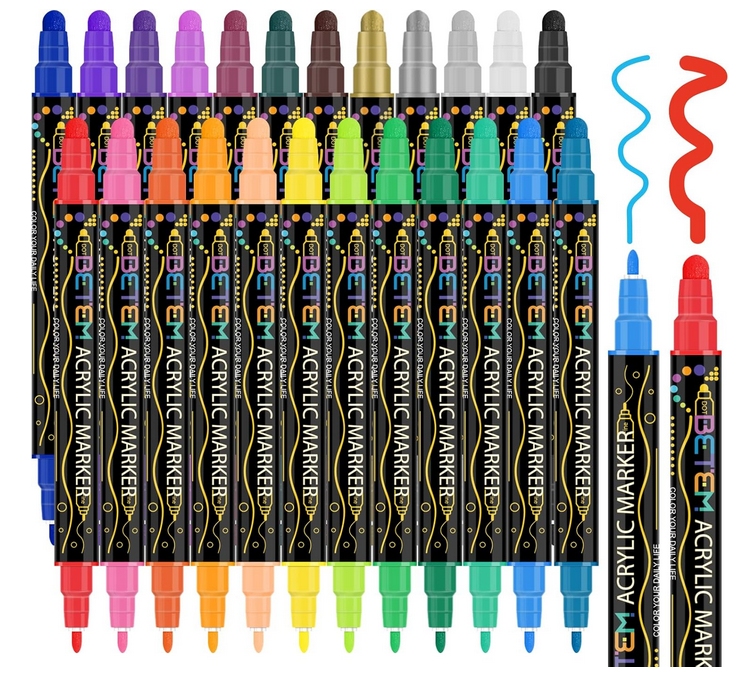- Home
- Art History
- Cubism
Cubism
Cubism begins ...
|
As the 20th century opened, artist in the Western world found themselves in an experimental era when they broke the boundaries of previously known art. Cubism was neither fully representational nor fully decorative, but explored new ways of interpreting the world. |
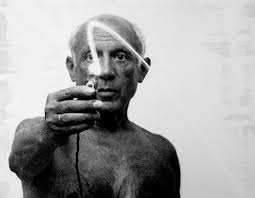 Picasso draws with light. Picasso draws with light. |
|
|
Cubism was developed in Paris during the first two decades of the twentieth century, chiefly led by Picasso and Braque. They took cues from the Post-Impressionist painter Paul Cézanne who painted with a flat, abstract approach – rendering geometric shapes: sphere, cone, and cylinder. Picasso and Braque pursued this approach until they began producing paintings that pictured the world in ways that it had never been seen before, presenting complex, multiple views of an object. An art critic who saw their early painting in an exhibit said the paintings reduced everything to “geometric outlines, to cubes.” So, this style was called “Cubism.” Many artists adopted this new style, mixing surface pattern and spatial ambiguities.
Pablo Picasso
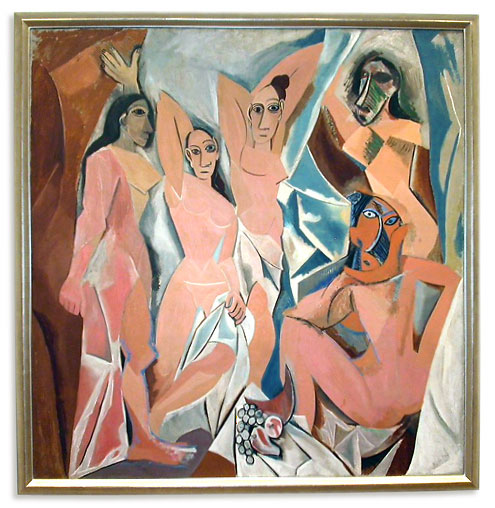
One
of the first paintings in this
new
style was les Demoiselles d’Avignon (1907) by Picasso. He
included angular distortions of classical figures and rendered three
others as distorted, barbaric and primitive, challenging the
classical conception of beauty. The painting was not accepted at
first (critics despised the first efforts and the public was not ready for Cubism), but Picasso's early effort turned out to be influential for many years. Picasso
was said to have invented Cubism with this painting in which he resolutely discarded the tradition of Western painting.
|
Key Artists ~
|
Key Developments ~
|
|
Art critic Louis Vauxcelles describe one painting as looking like "little cubes", which inspired the name - Cubism. |
Cubism \'kyü-bism\ n: ~ a style of art that stresses abstract structure at the expense of other pictorial elements, especially by displaying several aspects of the same object simultaneously and by fragmenting the form of depicted objects. - Merriam Webster |
Georges Braque
Georges Braque’s painting, Man with a Guitar (c. 1911), is another early Cubism painting. Braque demonstrated how an image could be reduced to a form of abstraction never previously imagined. The appearance of the subject is represented as interlinking flat planes painted with muted colors.
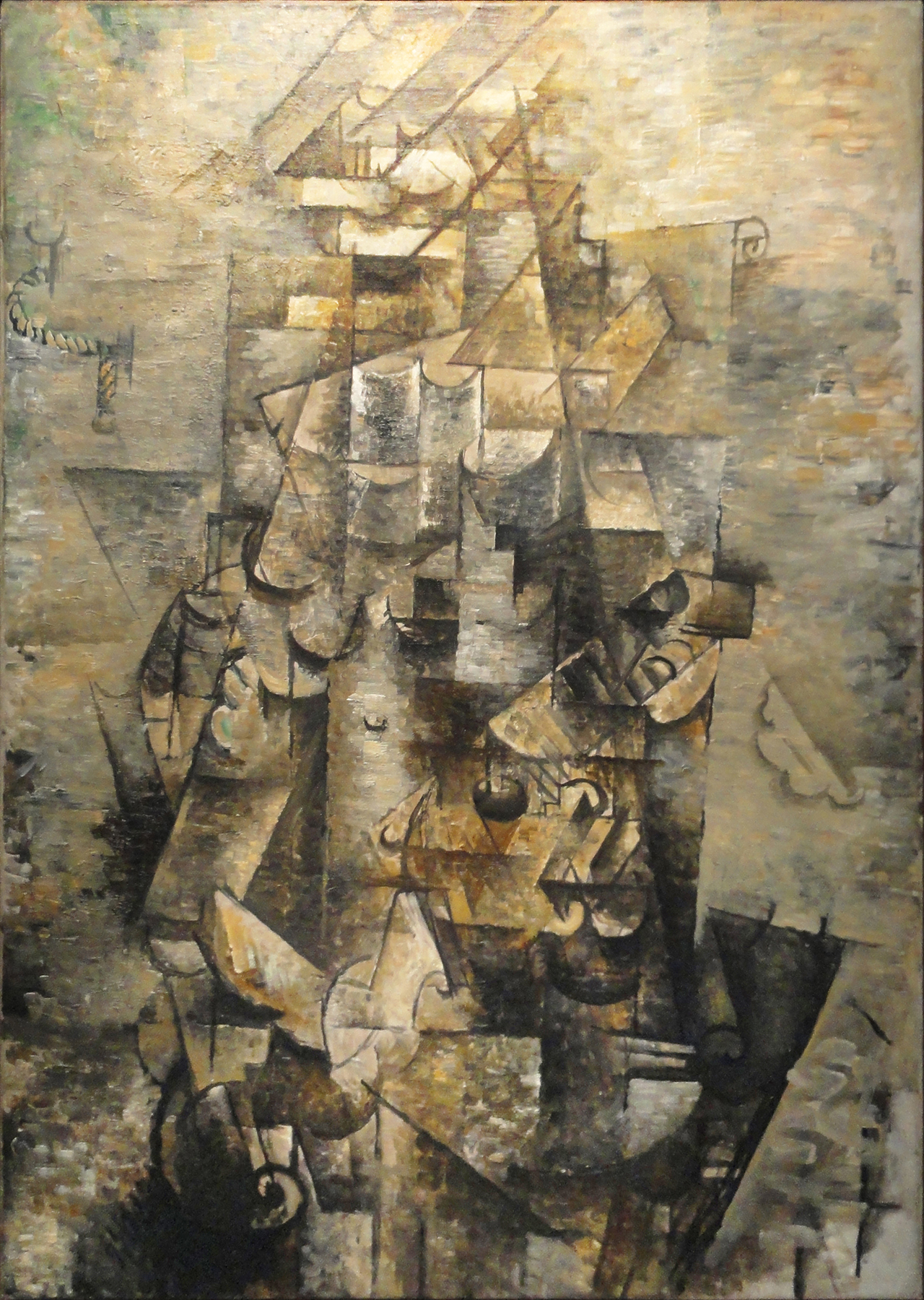
Nevertheless, Braque provides clues for the viewer's orientation. Elements of a guitar emerge and a strong diagonal line indicates an arm. Conversely, parallel diagonal brushstrokes obscure the features of the guitarist’s head.
Braque and Picasso worked together, working out the foundations of Cubism. They sought to create a new, non-naturalistic idiom for describing forms, transforming the orthodoxy of perspective in painting.
|
As painters adopted the new style, they simultaneously embraced the flatness of medieval painting style and the Renaissance use of perspective, showing volume. This yielded a shallow space where they could mix surface pattern and spatial ambiguities with objects seen from shifting viewpoints. |
Key Artists:
|
|
The first phase of Cubism was called Analytic Cubism; the second phase which included elements of collage was called Synthetic Cubism, lasting until about 1914. |
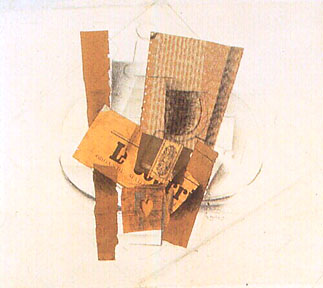 |
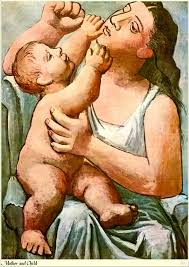
Yet, after having established collage Cubism, Picasso and Braque and others struck out for new directions. Picasso turned to a detailed, more realistic style, as in Mother and Child (c. 1921).
Picasso is given most of the credit as one of the main progenitors of abstract art, an eventual outcome of Cubism.
Picasso, who continuously reinvented his style of painting, producing
both representational and Cubist images, as well as incorporating surrealist ideas into his work. He continued to produce art until 1971, two years before his death.
Braque collaborated with Picasso until his enlistment in the French army during WWI. He was injured, temporarily losing his sight; then, he continued to paint in the Cubist style until the 1960s.
Cubism pointed the way, through the use of flat planes and abandoning perspective, to Abstract Expressionism.
Key Developments:
- In representing objects from several angles at once, Cubists showed more than conventional single-viewpoint images.
- Cubism introduced "non-art" materials such as newspaper, as elements of collage, and brighter colors.
- To achieve this on flat surfaces, their depictions from different angles look like geometric planes, and ...
- An early critic of the work, Louis Vauxcelles, described them as looking like "little cubes," which inspired the name Cubism.
Okay, so now I've put on some ads from Amazon - from which I may earn a few cents. (2025)



